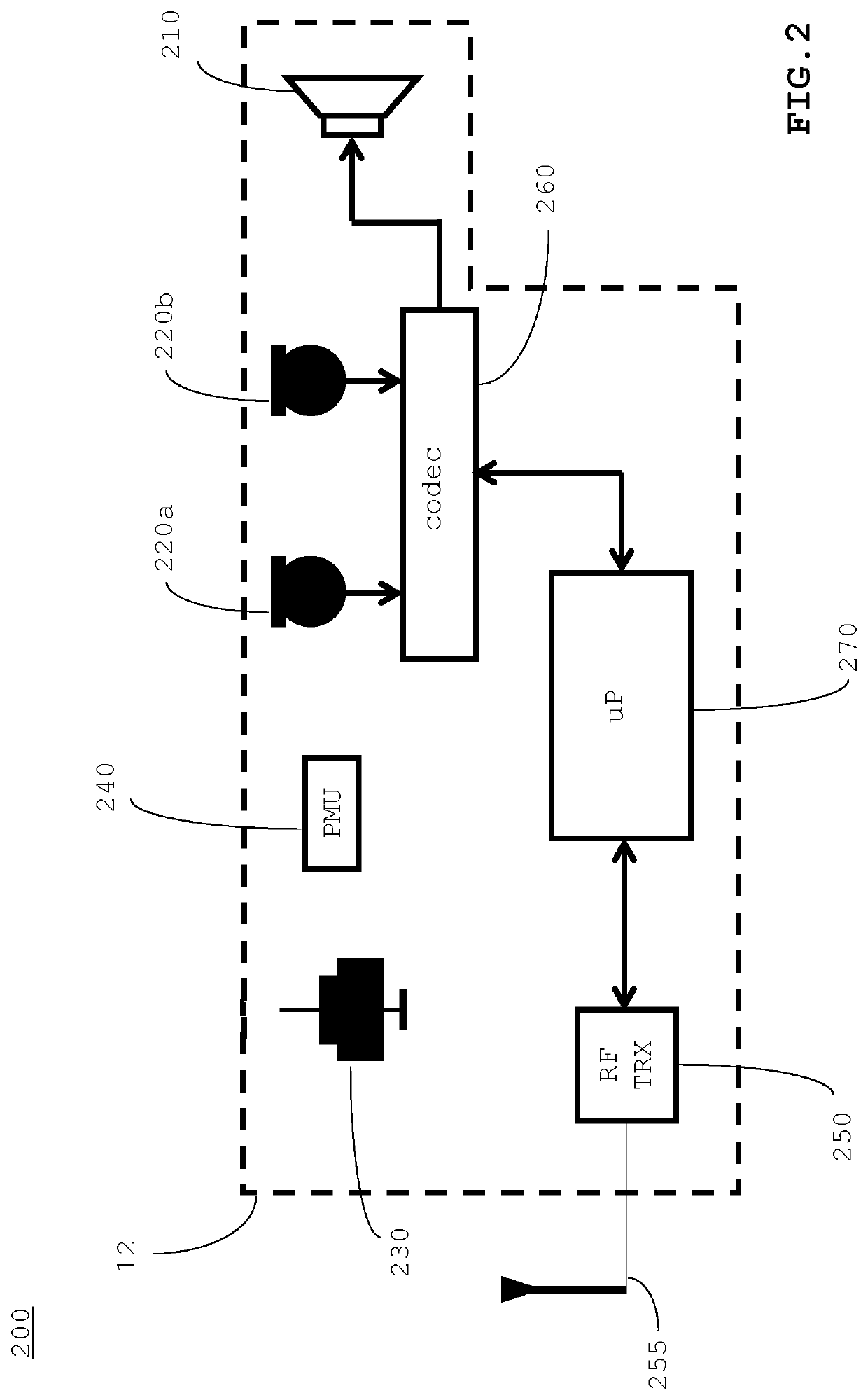Dual-microphone with wind noise suppression method
a dual-microphone and wind noise technology, applied in the field of audio devices, can solve the problems of unfavorable wireless headset use, and large contribution to wind noise, and achieve the effect of improving voice performance and voice pickup
- Summary
- Abstract
- Description
- Claims
- Application Information
AI Technical Summary
Benefits of technology
Problems solved by technology
Method used
Image
Examples
embodiment 1200
[0057]In the embodiment 1200 of FIG. 12, the dual-MIC arrangement 800 with equalizer 810 and the dual-MIC arrangement 1100 with high-pass filter 1110 and vibration sensor 1130 have been combined. The equalizer filter 810 has returned, but it may be operational only when there is no wind noise. The power of the wind noise may first be measured at the output of the dual-MIC arrangement 300 (which is equal to the input of the high-pass filter 1110). The detected signal may be low-pass filtered in low-pass filter 1210 (to remove any impact from the voice signal) for example using a low-pass raised-cosine filter with a −3 dB frequency of 200 Hz and α=0.5. The filtered signal may then be squared in 1220 to obtain a power level. Control block 1250 may use the measured power level to determine how much weight WA has to be placed on the equalized dual-MIC signal 1262 and how much weight WB has to be placed on the combined vibration sensor / high-pass filtered dual-MIC signal 1264. After multip...
embodiment 800
[0059]An alternative circuit diagram to the dual-MIC arrangement with vibration sensor to provide robustness in noisy wind conditions is shown in FIG. 14. It uses the embodiment 800 shown in FIG. 8 with the equalizer 810 directly following the dual-MIC arrangement 300. The equalizer output splits into two paths: one path via 1262 may be emphasized when the wind conditions are low to moderate, and the weighting WA is close to 1; another path via 1263 may be emphasized when the wind conditions are severe, the high-frequency components from the dual-MIC arrangements are added to the vibration sensor output, and the weighting WB is close to 1. Wind noise power may be derived at the output of the dual-MIC arrangement similar as was discussed for the configuration shown in FIG. 12. Based on the measured wind power, the proper values of WA and WB may be selected by control unit 1250. Alternatively, the wind noise power may be measured after the equalizer 810, i.e. the input of the low-pass...
PUM
 Login to View More
Login to View More Abstract
Description
Claims
Application Information
 Login to View More
Login to View More - R&D
- Intellectual Property
- Life Sciences
- Materials
- Tech Scout
- Unparalleled Data Quality
- Higher Quality Content
- 60% Fewer Hallucinations
Browse by: Latest US Patents, China's latest patents, Technical Efficacy Thesaurus, Application Domain, Technology Topic, Popular Technical Reports.
© 2025 PatSnap. All rights reserved.Legal|Privacy policy|Modern Slavery Act Transparency Statement|Sitemap|About US| Contact US: help@patsnap.com



